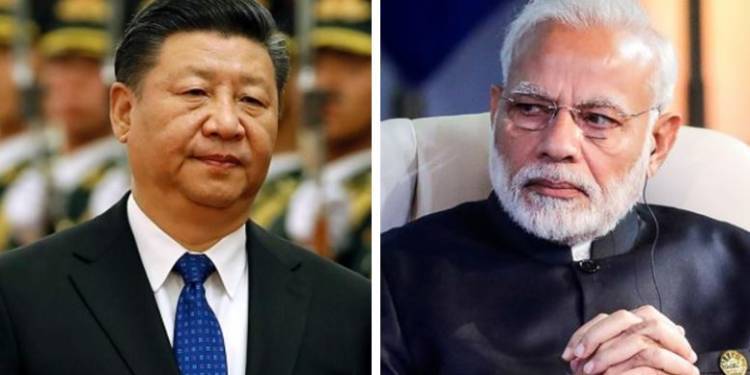The boycott-China movement initially started in India after Beijing gifted the Coronavirus pandemic to the world and gained the momentum only after China tried to grab parts of Indian territory. As per the data from the Chinese government’s customs department, it seems that India has so far been successful in pushing down China to its knees. The reports suggest that the imports from China have fallen sharply by 24.7 per cent while the exports have gone up by 6.7 per cent in January.
For long, successive Indian governments had tried to kick China out of the market. The anti-China rhetoric was used to build up whenever there was any tension at the border, only to cool down after a few months. India imported goods and services worth 65.26 billion dollars from China FY 20 while the total trade volume stood at 81.6 billion dollars, registering a trade deficit of total 48.66 billion dollars. This was even though the Modi government had increased custom duty on many Chinese goods like steel, toys, scooters, and tricycles.
However, this time, the effect of boycott China is visible on the ground as exports have shot up while imports are on a downward spiral.
The total business with China this year stood at 43.47 billion dollars with a drop of 18.6 per cent. The government initiatives to kick China out of Indian supply chains are now showing results on ground zero as the government’s nudge is in align with people’s anti-China sentiments.
In the last few weeks, the government has used many non-tariff barriers at its disposal to bar Chinese goods entering the Indian market. The government is seeking to boost exports to provide large scale employment to semi-skilled and unskilled labour. “China has been very effectively using non-tariff barriers to curb imports that it wants to avoid. On the other hand, it also uses these restrictions as a political tool to control bilateral relations,” said Biswajit Dhar, a senior trade policy expert and professor at Jawaharlal Nehru University.
India is also exploring other countries to import its goods that were earlier being imported from China. As per research by policy think tank named Research and Information System for Developing Countries, three fourth of the goods currently being imported from China can be alternatively sourced. The organization identified 327 items which can be easily sourced from other countries, using United Nations Comtrade data. Also, the think tank argued that many of these items can be sourced domestically. “It is possible to produce some of the products domestically if other sources are not immediately available,” RIS director-general Sachin Chaturvedi said.
In June, Confederation of All India Traders (CAIT), the apex body of trader’s union, had decided to boycott Chinese goods worth more than 1 lakh crore rupees- 13 billion dollars approximately- by December 2021. CAIT had already prepared a list of 3,000 items which includes toys, gifts, FMCG products, confectionery products, clothes and watches, as good indigenously manufactured alternatives of these items are available.
The boycott of Chinese goods worth 13 billion dollars by December 2021, if successful, would bring down the trade deficit of 48 billion dollars significantly. The synchronized effort of the Indian government and the traders would directly benefit the Indian manufacturers and will also harm the Chinese economy.
Many union government ministries, including the railway and telecommunication, have revoked the contracts given to Chinese companies. BSNL, the state-owned telecom company, has been told to not use Chinese-made equipment in its 4G up-gradation. “The entire tender will be reworked now,” said an official. The Department of Telecom also told the private companies like Airtel and Vodafone to reduce their dependence on the dragon. These companies use 25-30 per cent of their equipment by Chinese companies like Huawei and ZTE.
“In the current situation, the safety and security of networks built with Chinese equipment will be under scrutiny. The ownership patterns of Huawei and ZTE could become a sticking point in India’s network up-gradation plans,” said the official.
Another department which actively moved ahead to throttle the Chinese companies out is The Indian Railways. China Railway Signal and Communication (CRSC) Corp., which was earlier awarded the contract to install signalling in the Eastern Dedicated Freight Corridor in 2016 for 500 crore rupees, has now been told to move out as its contract has been revoked.
With the rising anti-China sentiments in the whole country, the cooperation between all the three players involved in the trading process– consumers, traders, and the government, has resulted in the substantial downfall of imports while exports being shot up.
